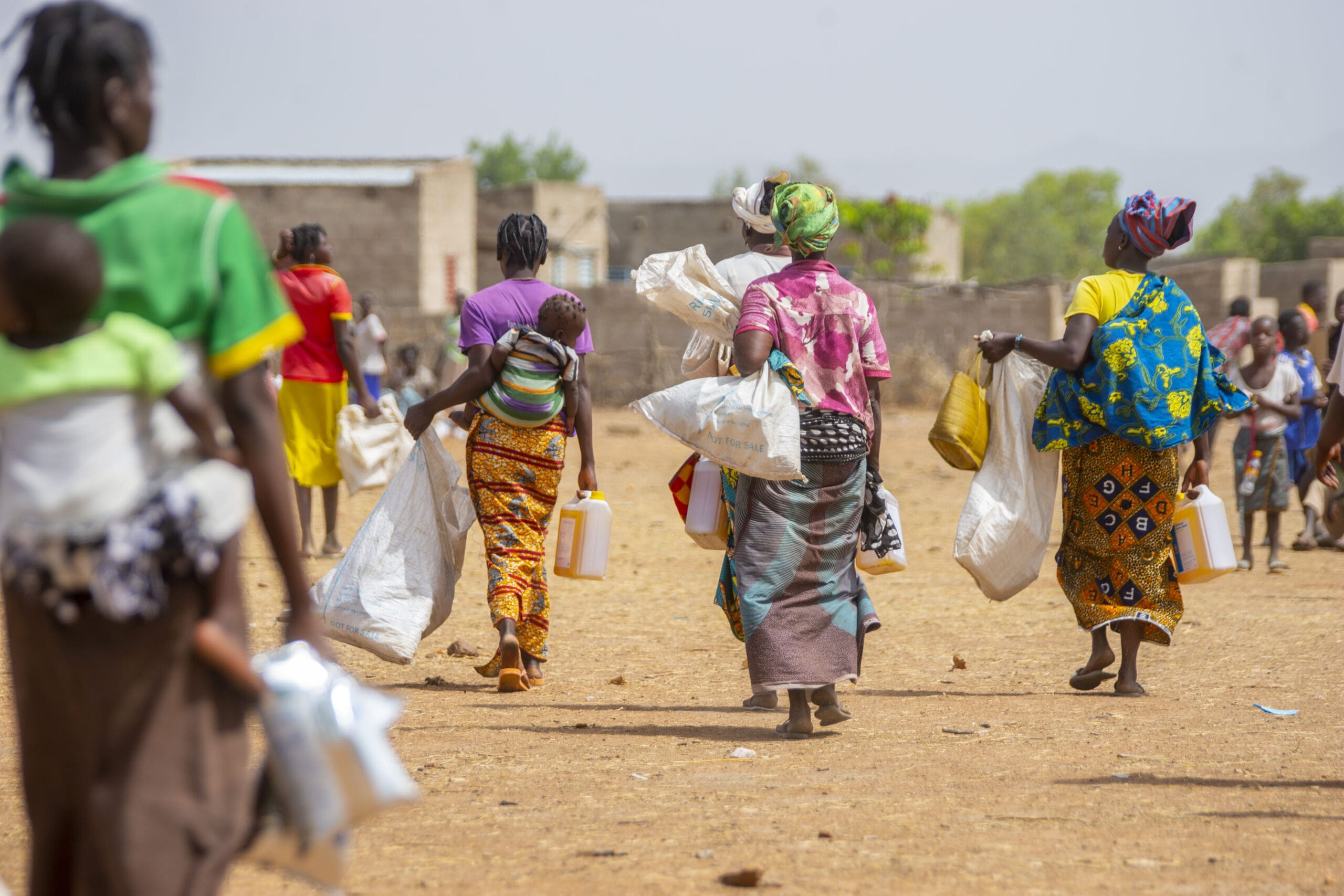Poverty
& the Hunger Trap
 WFP/Cynthia Matonhodze
WFP/Cynthia MatonhodzePoverty is always at the core of extreme hunger and exacerbated by factors like rising food costs, outbreaks of conflict and sudden climate shocks. We provide food to families experiencing the most extreme levels of poverty to help them survive, and we deploy long-term solutions so they can overcome hardships in the future.
Poverty Around the World
$2.15
People in extreme poverty live on less than $2.15 per day.
1/12
1 in 12 people are living in extreme poverty.
1/2
Just over half of all people in extreme poverty live in sub-Saharan Africa.
Break the CYcle of Poverty & Hunger
Poverty is the root cause of suffering for millions of people, from life-threatening malnutrition to social exclusion. Poverty traps families in debilitating cycles of disadvantage as they are cut off from educational opportunities, economic resources, healthcare and the food they need to fuel their bodies.
The World Food Programme (WFP) serves people who are experiencing the most severe levels of hunger and poverty. Through lifesaving food and long-term programming, we build pathways for millions of people across the globe to break the cycle of poverty, hunger and inequality.
 WFP/Michael Tewelde/2023
WFP/Michael Tewelde/2023How Extreme Poverty Breeds Extreme Hunger
 WFP/Arete/Arlette Bashizi/2022
WFP/Arete/Arlette Bashizi/2022When parents can’t afford food every day, children don’t receive the nutrition they need for healthy physical and emotional development. This lack of nutrition can leave children vulnerable to common illnesses and malnutrition which can have lifelong impacts.
 WFP/Rein Skullerud
WFP/Rein SkullerudThe conditions of poverty include low access to safe drinking water, sanitation and hygiene. Those same factors are estimated to account for around 50% of global malnutrition cases. Imagine how difficult it would be to prepare a meal without clean water. WFP programs helps create community projects like clean water.
 WFP/Andy Higgins/2021
WFP/Andy Higgins/2021It’s a bitter irony that small-scale farmers are disproportionately among the world’s poorest people. Systemic inequities mean many don’t have access to the tools, financing or supplies needed to effectively grow, harvest and store enough food, much less turn a profit.
WFP Delivers Food to the Poorest Countries

Guatemala
Guatemala is one of the most unequal countries in Latin America. Two-thirds of the population live in extreme poverty. Half the population cannot afford a basic food basket. WFP helps identify the most vulnerable populations and partners with the government provide food assistance.
Haiti
Haiti is the poorest country in Latin America and the Caribbean. One-quarter of Haiti’s population lives in extreme poverty. Political upheaval, relentless natural disasters, and the economic fallout of COVID-19 have exacerbated this poverty and pushed more Haitians into hunger. Half of the population does not have enough food to eat. WFP is delivering essential emergency food aid to people in Haiti.
Nigeria
70% of Nigeria’s population lives below the poverty line. This persistent poverty is concentrated in the northeast and northwest. In the northeast, 14 years of conflict have displaced millions of people from their homes and pushed them into acute levels of hunger. WFP is providing vital food aid to displaced people living in camps.
Afghanistan
Decades of conflict, climate shocks and severe economic decline have plunged millions of Afghans into poverty and hunger. Today, over half of Afghanistan’s population lives below the poverty line. The country continues to teeter on the edge of economic collapse with the local currency at an all-time low and food prices on the rise. WFP reaching vulnerable families across the country with lifesaving food.
The Philippines
20 million Filipinos – roughly one-fifth of the population – live below the poverty threshold. This is despite the government’s efforts to strengthen social protection systems and build communities’ resilience to economic shocks. Compounding crises including conflict and climate-related disasters like Typhoon Rai continue to drive people into poverty and hunger. WFP is working with the government to provide food and strengthen resilience among poor communities.
 WFP/Gabriela Vivacqua/2022
WFP/Gabriela Vivacqua/2022Causes of Poverty
Extreme Weather
More than 80% of the world’s poorest people live in disaster-prone countries – they bear the brunt of floods, droughts and hurricanes. See how poverty and extreme are linked.
Food Waste
In countries where hunger is rampant, farmers often lose much of their crops during growth, harvest and storage. See how farmers living in poverty face an uphill climb in living off the land.
WFP Helps Lift People Out of Poverty and Hunger
The U.N. World Food Programme provides marginalized communities with solutions to break the cycle of generational poverty.
Cash-Based Aid
Training
School Meals
Supporting Farmers
Stories of Extreme Poverty
- Blog
- March 13, 2023





